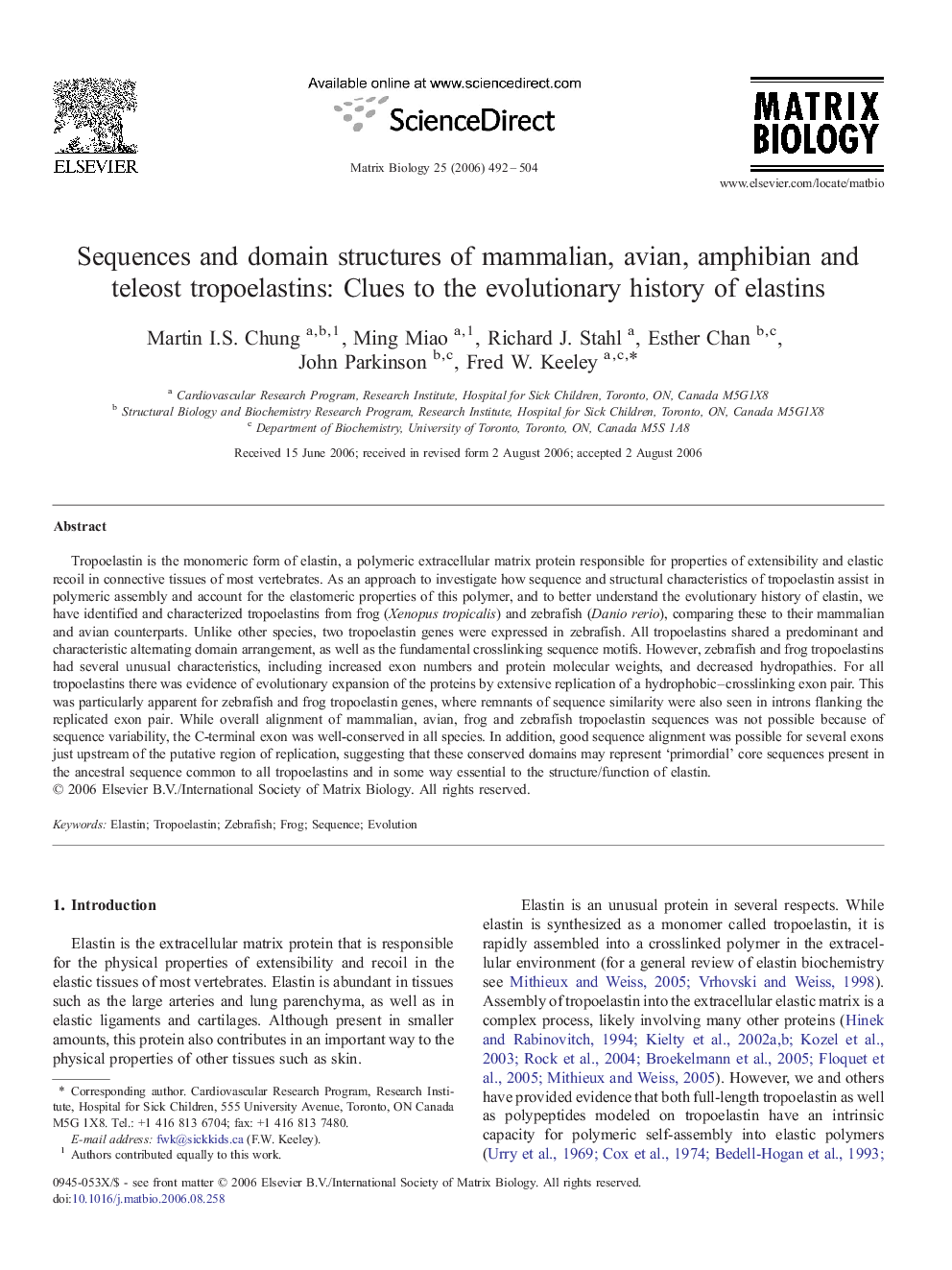| کد مقاله | کد نشریه | سال انتشار | مقاله انگلیسی | نسخه تمام متن |
|---|---|---|---|---|
| 2145472 | 1088677 | 2006 | 13 صفحه PDF | دانلود رایگان |

Tropoelastin is the monomeric form of elastin, a polymeric extracellular matrix protein responsible for properties of extensibility and elastic recoil in connective tissues of most vertebrates. As an approach to investigate how sequence and structural characteristics of tropoelastin assist in polymeric assembly and account for the elastomeric properties of this polymer, and to better understand the evolutionary history of elastin, we have identified and characterized tropoelastins from frog (Xenopus tropicalis) and zebrafish (Danio rerio), comparing these to their mammalian and avian counterparts. Unlike other species, two tropoelastin genes were expressed in zebrafish. All tropoelastins shared a predominant and characteristic alternating domain arrangement, as well as the fundamental crosslinking sequence motifs. However, zebrafish and frog tropoelastins had several unusual characteristics, including increased exon numbers and protein molecular weights, and decreased hydropathies. For all tropoelastins there was evidence of evolutionary expansion of the proteins by extensive replication of a hydrophobic–crosslinking exon pair. This was particularly apparent for zebrafish and frog tropoelastin genes, where remnants of sequence similarity were also seen in introns flanking the replicated exon pair. While overall alignment of mammalian, avian, frog and zebrafish tropoelastin sequences was not possible because of sequence variability, the C-terminal exon was well-conserved in all species. In addition, good sequence alignment was possible for several exons just upstream of the putative region of replication, suggesting that these conserved domains may represent ‘primordial’ core sequences present in the ancestral sequence common to all tropoelastins and in some way essential to the structure/function of elastin.
Journal: Matrix Biology - Volume 25, Issue 8, October 2006, Pages 492–504